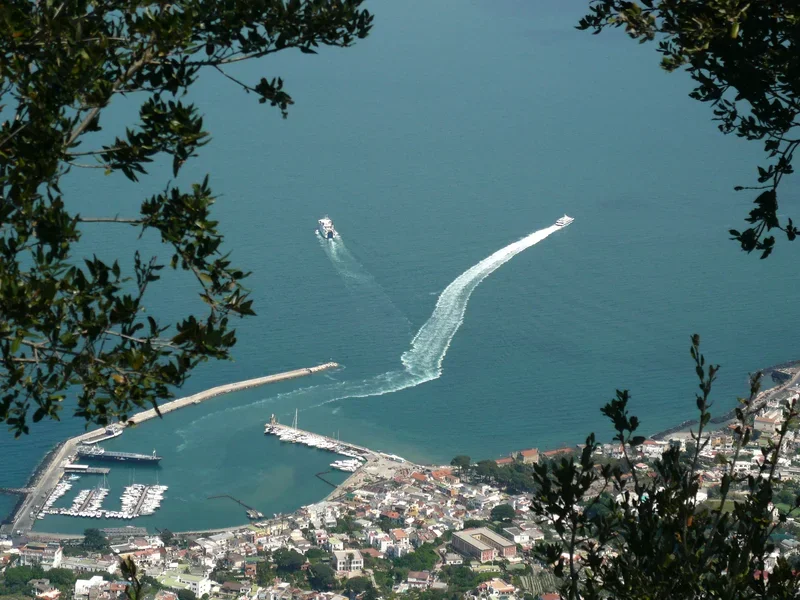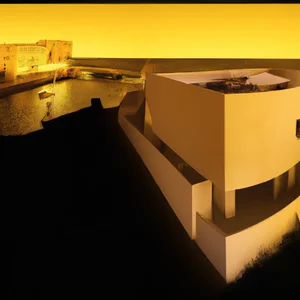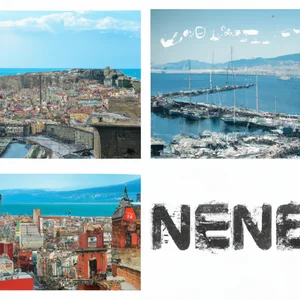Book your experience
Spanish Quarters
The Spanish Quarters of Naples represent a vibrant microcosm rich in history, culture and traditions that fascinates every visitor. Located in the heart of the city, these neighborhoods were born in the 16th century as part of Spanish urban planning, intended to house Spanish troops. Today, the Quartieri Spagnoli are one of the most authentic areas of Naples, where time seems to have stopped and daily life flows intensely through narrow and lively alleys. In this article, we will explore ten aspects that make the Quartieri Spagnoli an unmissable place for those visiting Naples. From the fascinating history that has shaped this area, we will immerse ourselves in the characteristic architecture and picturesque streets, where every corner tells a story. We will focus on street art, which transforms walls into living canvases, and on gastronomy, with its authentic flavors and traditional dishes that represent the heart of Neapolitan cuisine.We will not fail to explore the lively nightlife, the local markets where you can find fresh and artisanal products, and the traditions that animate the local community with popular festivals and celebrations. Furthermore, we will discover monuments and places of interest that tell the history of the city, and cultural experiences that offer a deep immersion in Neapolitan life. Finally, we will provide practical advice for visitors, so that they can best experience the authenticity of this unique area. The Quartieri Spagnoli are not just a place to visit, but an experience to live, a journey into the beating heart of Naples.
History of the Quartieri Spagnoli
The Spanish Quarters of Naples, also known as “Quartiers”, are a historic area that extends between Via Toledo and Vomero. Their origin dates back to the 16th century, when the city was under the rule of the Spanish. This neighborhood was designed as a residential area for Spanish soldiers and families, hence the name “Spanish Quarters”.
Origins and development
The neighborhood was built to house the Spanish troops who occupied Naples, and was characterized by a dense network of streets and alleys. Its design aimed to contain the population in a relatively small space, with multi-storey buildings and a high population density. Over the centuries, the Quartieri Spagnoli have become a melting pot of cultures, traditions and stories, reflecting the complexity of the city of Naples.
The modern period
In recent decades, the Quartieri Spagnoli have experienced a phase of redevelopment and cultural rebirth, becoming a point of reference for artists, musicians and tourists. Today, despite some challenges related to crime and poverty, the neighborhood is known for its vibrant community and authenticity. The streets are animated by markets, artisan shops and a rich cultural life.
Cultural importance
The Spanish Quarters represent an important cultural and historical heritage of Naples. Here you can find numerous monuments, churches and squares that tell the history of the city. Furthermore, the neighborhood is often the scene of cultural events and popular festivals, which attract visitors from all over the world.
Architecture and Streets Characteristics of the Spanish Quarter
The Quartieri Spagnoli, located in the heart of Naples, are a labyrinth of narrow streets and suggestive alleys, which offer a unique and authentic experience of Neapolitan life. This neighborhood is known for its historic architecture, which reflects a mix of styles, from baroque to neoclassical, with buildings dating back to the period of Spanish domination in the 16th century.
Architectural Structures
The architectural structures of the Quartieri Spagnoli include historic churches, such as the Church of Santa Maria delle Grazie and the Church of San Domenico Maggiore, which feature elaborate facades and breathtaking interior frescoes. These churches are perfect examples of the artistic and architectural heritage of Naples.
The streets
The streets are characterized by murals, artisan workshops and food shops offering typical products. Walking through the alleys, visitors can appreciate the lively and authentic atmosphere of the neighborhood, where Neapolitan folklore is palpable. The narrower alleys, such as Via Toledo and Via Speranzella, are particularly known for their liveliness and the bright colors of the building facades.
Unique Features
The Spanish Quarters are also famous for the flowered balconies and the iron grills that adorn the windows, creating a picturesque atmosphere. The stairs that connect the various levels of the neighborhood are another distinctive feature, making every corner an opportunity to take unforgettable photos.
In summary, the architecture and narrow streets of the Quartieri Spagnoli offer a fascinating journey into Naples’ past, inviting visitors to explore and discover the rich history and culture that permeate this unique neighborhood.
Street art and murals
The Spanish Quarters of Naples are a true open-air museum, where street art and murals tell stories of life, struggle and hope . This area, historically characterized by a high population density and intense community life, has seen in recent years a flourishing of artistic works that embellish the streets and squares, transforming the urban fabric into a vibrant artistic expression.
History and development of street art
Over the years, street art in the Quartieri Spagnoli has emerged as a form of social and cultural expression, with local and international artists choosing this neighborhood to express their creativity. The works, often created with spray, stencils or collages, address social, political and cultural issues, giving voice to a community that wishes to be heard.
Famous murals
Among the most famous murals, those dedicated to historical figures and cultural icons stand out, such as the mural of Maradona, which celebrates the Neapolitans’ love for the famous Argentine footballer. Other murals represent scenes of daily life, portraits of people from the neighborhood and messages of resistance and hope, paying homage to Neapolitan popular culture.
Events and initiatives
To enhance and promote street art, dedicated events and festivals have been organised, such as the “FestiWall”, which saw the participation of artists from all over the world. These events not only beautify the neighborhood, but also attract tourists and art enthusiasts, contributing to a cultural renaissance of the area.
Guided tours and artistic itineraries
There are several guided tours that focus on street art in the Spanish Quarter, offering visitors the opportunity to discover the most significant murals and learn about the stories behind each work. These tours are an excellent way to understand the social and cultural complexity of the neighborhood, as well as a way to support local artists.
In summary, street art and murals in the Quartieri Spagnoli of Naples are not just a form of urban decoration, but an important expression of the cultural identity of the community, a way to tell stories and create a link between past and present.
Traditional Neapolitan cuisine
Traditional Neapolitan cuisine is a true cultural heritage, famous throughout the world for its variety and the quality of the ingredients used. In the gastronomy of Naples, you can find dishes that mix local and historical influences, making each dish a unique experience.
Neapolitan Pizza
One of the most iconic dishes is the Neapolitan pizza, recognized by its thin and soft base with high and crunchy edges. The main ingredients are flour, water, salt and yeast, typically seasoned with San Marzano tomatoes, buffalo mozzarella and fresh basil. Tradition dictates that it is cooked in a wood-fired oven, at very high temperatures.
Pasta and Beans
Another traditional dish is pasta and beans, prepared with short pasta and borlotti beans, flavored with tomato and herbs such as rosemary and garlic. Each family has its own secret recipe, which can include variations such as the addition of bacon or seafood.
Neapolitan Ragù
The Neapolitan ragù is another fundamental dish, cooked slowly with beef and tomatoes, typically served with pasta. This dish is often prepared on Sunday and represents a moment of family sharing.
Traditional Sweets
We cannot talk about Neapolitan cuisine without mentioning desserts. Among the most famous are sfogliatelle, a fragrant pasta filled with ricotta and semolina, and babà, a dessert soaked in rum. These desserts are often served in the city’s historic cafes.
Markets and Food Streets
For lovers of gastronomy, a visit to the local markets such as the Porta Nolana Market or the Pignasecca Market is unmissable, where it is possible to find fresh and typical ingredients , as well as enjoying local street food such as omelettes and pizzette.
In summary, traditional Neapolitan cuisine is a mix of flavours, colors and traditions that tell the story and culture of this fascinating city. Each dish is a journey through time and an experience not to be missed for those visiting Naples.
Nightlife and typical venues
Nightlife in Naples is vibrant and varied, offering a wide range of options to suit all tastes. The Quartieri Spagnoli, in particular, are an epicenter of evening activity, with a multitude of bars, restaurants and nightclubs that liven up the streets after dark.
Bars and Pubs
The bars in the Spanish Quarter are famous for their welcoming and informal atmosphere. Places like ‘A’ Cammarelle and Il Caffè dei Fiori are very popular among locals and tourists, offering typical drinks and a selection of local wines. Here you can enjoy a spritz or a limoncello while chatting with friends or listening to live music.
Restaurants and Taverns
For a typical Neapolitan dinner, there are many trattorias that offer traditional dishes such as spaghetti with clams, pizza margherita and sfogliatelle. Restaurants like Trattoria da Nennella are famous for their generous portions and convivial atmosphere, making every meal a unique experience.
Nightclubs and Discos
If you are looking for a bit of fun, Naples also offers several discos and nightclubs. Club Partenopeo and Hades are among the most renowned, with local and international DJs who make you dance until dawn. The music varies from Neapolitan to commercial, ensuring there is something for everyone.
Events and Concerts
During the year, Naples hosts various night events, concerts and street parties. These events are a great opportunity to immerse yourself in local culture and discover emerging artists. Live music concerts are held in various venues, while squares can become stages for artistic and theatrical performances.
Advice for an evening in Naples
When exploring the nightlife of Naples, it is recommended to start the evening around 8pm with dinner, followed by a drink in one of the many bars. Remember to respect local traditions and ask for advice on the best places to visit. Security is generally good, but it is always better to move in a group and pay attention to your personal belongings.
Local markets and shopping in Naples
The local markets of Naples are an authentic experience that offers an immersion in the daily life of Neapolitans. These markets represent not only a place for shopping, but also a social meeting point, where traditions and culture mix in a lively atmosphere.
The main local markets
Among the most famous markets in Naples, we can mention:
- Porta Nolana Market: Located in the historic center, it is famous for its fresh fish and typical Neapolitan products. Here you can also find seasonal fruit and vegetables, as well as local gastronomic specialities.
- Pignasecca Market: This is one of the most historic markets in Naples, known for its variety of food products, from the vegetable garden to the fish stall. It’s a great place to get a taste of neighborhood life and find fresh ingredients for Neapolitan cuisine.
- Fuorigrotta Market: A more modern market that offers a wide range of products, from food to clothing. It is very popular with residents and offers a selection of fresh, local products.
Shopping in the streets of Naples
In addition to the markets, Naples also offers interesting shopping opportunities in its famous shopping streets. Via Toledo and Via Chiaia are two of the main shopping arteries, where you can find fashion shops, local craftsmanship and design boutiques.
Typical products to buy
When you visit Naples, you cannot return home without purchasing some of the following typical products:
- Cornicelli: Horn-shaped amulets, considered good luck, very popular among Neapolitans.
- Pasta di Gragnano: Famous for its quality, it is a must for those who love Italian cuisine.
- Neapolitan Limoncello: A lemon-based liqueur, perfect as a gastronomic souvenir.
In summary, the local markets and shopping opportunities in Naples offer a rich and varied experience, allowing visitors to discover the true essence of Neapolitan culture.
Traditions and popular festivals
The Spanish Quarters of Naples are a true treasure chest of traditions and popular festivals that reflect the liveliness and unique character of the culture Neapolitan. These events, often linked to religious celebrations or significant community moments, attract both residents and tourists, offering an authentic experience of local life.
Feast of San Martino
One of the most heartfelt celebrations is the Festa di San Martino, which is held on November 11th. During this festival, Neapolitans prepare traditional dishes based on chestnuts and new wine, creating an atmosphere of celebration and conviviality. The streets are filled with stalls and music, making the entire neighborhood a place of celebration.
Christmas Eve and Nativity Scene
During the Christmas period, the Quartieri Spagnoli come alive with handcrafted cribs. The streets are transformed into a real Christmas market, where you can find figures and materials for creating nativity scenes. Christmas Eve is a special time, with culinary traditions and religious celebrations that bring the community together.
Feast of the Madonna Assunta
Another important holiday is the Festa della Madonna Assunta, which is celebrated on August 15th. During this festival, processions and religious rites take place in the streets, accompanied by traditional music and dances. It is a moment of strong devotion and conviviality, which involves the entire community.
Carnival traditions
The Carnival is another occasion in which the Quartieri Spagnoli comes alive. The streets are filled with colours, masks and confetti, with events including parades and street parties. The traditional costumes and artistic performances make this period a moment of great joy and fun.
These traditions and festivals not only celebrate local culture, but also strengthen the sense of community among residents, offering a unique opportunity for visitors to immerse themselves in Neapolitan life. The Quartieri Spagnoli, with their vibrant and welcoming atmosphere, are the ideal place to live these unforgettable experiences.
Monuments and places of interest in the Quartieri Spagnoli
The Spanish Quarters of Naples are rich in history and culture, and offer a variety of monuments and places of interest that deserve to be be explored. This area, characterized by a lively and authentic atmosphere, is a true treasure chest of historical treasures.
Church of Santa Maria di Monteverna
One of the most significant churches in the neighborhood, the Church of Santa Maria di Monteverna is famous for its baroque façade and interiors decorated with works of art of great value. It is a place of worship much loved by locals and offers an atmosphere of tranquility.
Palazzo Serra di Cassano
This palace, located in via Montecalvario, is an extraordinary example of Neapolitan aristocratic architecture. Built in the 18th century, the palace features frescoes and decorations that tell the story of the Neapolitan nobility. Today it hosts cultural events and exhibitions.
Piazza del Gesù Nuovo
Located near the Quartieri Spagnoli, this square is known for the Church of Gesù Nuovo, a masterpiece of Neapolitan Baroque. The facade of the church, made of lava stone, presents a unique and fascinating appearance. The square is also an important meeting point for Neapolitans.
Via Toledo
This historic street, which runs through the Spanish Quarter, is famous for its shops, cafes and restaurants. The Galleria Umberto I, located nearby, is another place not to be missed, with its elegant architecture and high fashion boutiques.
New Theater
The Teatro Nuovo is one of the main theaters in Naples and offers a variety of theatrical and musical shows. Located in the heart of the Quartieri Spagnoli, it represents an important cultural center for the city and an ideal place to discover the lively Neapolitan theater scene.
Exploring the monuments and places of interest of the Quartieri Spagnoli not only offers a glimpse into the history and art of Naples, but also allows you to immerse yourself in the daily life of Neapolitans, making the visitor’s experience even more authentic and memorable.
Cultural experiences and guided tours
The Spanish Quarters of Naples offer a wide range of cultural experiences that allow visitors to immerse themselves in the authentic life of the city. These guided tours can range from historical walks to food tours, each designed to help you discover the neighborhood’s rich cultural heritage.
Historical walks
A walking tour of the Spanish Quarter is an ideal way to explore narrow streets and quaint alleys. Local guides tell fascinating stories about the neighborhood’s history and culture, explaining the importance of places like the Church of Santa Maria Francesca delle Cinque Piaghe and the Palazzo delle Arti of Naples.
Food tours
The traditional Neapolitan cuisine is another aspect not to be missed. The gastronomic tours offer the opportunity to taste typical dishes such as Neapolitan pizza, Sfogliatelle and Neapolitan coffee, while exploring the historic shops and local markets. Culinary guides often share recipes and secrets of the local culinary tradition.
Artisan workshops
Some tours include visits to artisan workshops where you can observe artisans at work, creating typical products such as ceramics, coral and Neapolitan nativity scenes. These experiences allow you to learn the importance of craftsmanship in Neapolitan culture and to purchase unique souvenirs.
Cultural events and shows
During the year, it is possible to participate in cultural events and theatrical performances held in the Quartieri Spagnoli. Many tours include access to small theater performances or traditional music concerts, offering a unique opportunity to experience Neapolitan culture in an immersive way.
In summary, the cultural experiences and guided tours in the Spanish Quarter represent an unmissable way to get to know Naples in an authentic and profound way, allowing visitors to appreciate its traditions, its gastronomy and its lively community life.
Practical advice for visitors
Moving around the Spanish Quarter
To explore the Spanish Quarter, it is advisable to wear comfortable shoes, as the streets are often uphill and paved with cobblestones. The area is well served by public transport, with several bus lines and the metro. The closest stop is Toledo, which allows easy access to the neighborhood.
Attention to safety
As in many cities, it is important to maintain a certain level of attention to safety. Avoid displaying valuables and be careful with your belongings, especially in crowded places.
Times and openings
Shops and restaurants in the Spanish Quarters have variable hours. Many shops close during the afternoon for the lunch break, reopening around 4pm. It is advisable to plan visits taking these times into account.
Local experiences
To fully immerse yourself in the local culture, try taking part in a cooking class or a food tour. These experiences offer a unique opportunity to learn the secrets of Neapolitan cuisine and discover the local markets.
Respect for local culture
Finally, remember to respect local culture and traditions. Neapolitans are famous for their hospitality, but a respectful attitude helps to establish a good relationship with the residents and make the experience even more pleasant.































